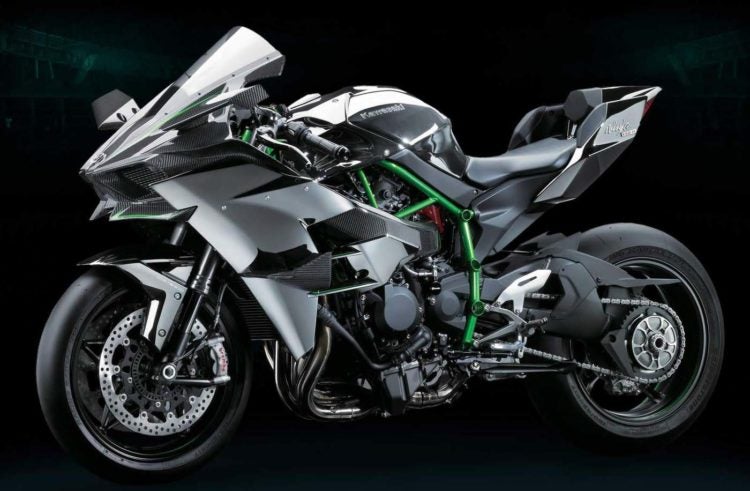Kawasaki Heavy Industries is no stranger to helicopters and drones, having jointly developed the BK117 helicopter with Germany’s Messerschmitt-Bölkow-Blohm, as well as more recently testing a large drone powered by three ZX10R Superbike engines. Their latest development is the unmanned “K-RACER-IV”, designed to improve on the speed capabilities of conventional helicopters, as shown in a YouTube video released by Kawasaki on October 5.
Kawasaki’s unique design features a conventional main rotor, but eschews a tail rotor in favour of a pair stub wings with a forward-facing rotor on each wingtip. Together, the two forward-facing rotors counteract the torque generated by the main rotor the way a single tail rotor would. With the wings providing additional lift, the design is said to allow for higher top speeds than a conventional helicopter layout. While not entirely new (see Eurocopter’s X-3 for one example), this layout is not currently in widespread use.

The Kawasaki H2R. Credit: Kawasaki
The powerplant for the K-RACER-IV is Kawasaki’s own Ninja H2R supercharged inline-four. In stock production form, the 998cc motor produces 310 horsepower and 115 lb⋅ft of torque. Ram-air effects at speed are said to increase output to 326 horsepower. No details are given as to the state of tune of the H2R motor in the K-RACER-IV, and unfortunately, the video does not include the sound of the engine in action during the test flight.
The minute-and-a-half video does feature a dramatic soundtrack and graphics, and includes a glamour shot of the K-RACER-IV and a Ninja H2R together. The rest of the video shows the helicopter take off, fly in a straight line, and execute a simple banked turn, in order to test the stability and maneuverability of the unmanned rotorcraft.
K-RACER stands for “Kawasaki Researching Autonomic Compound to Exceed Rotorcraft”, and Kawasaki plans to use lessons learned from this project to further develop VTOL (Vertical Take-Off and Landing) aircraft for various duties.


